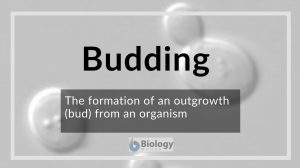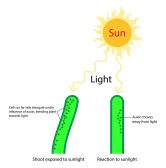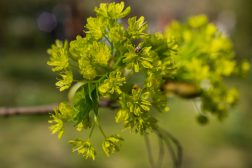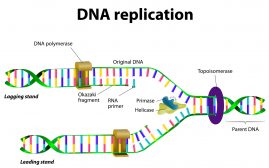
Definition of budding
Table of Contents
Budding definition
In a general context, budding refers to a state where development begins. In science, its meaning refers to the process of bud formation, as it is seen in both unicellular (e.g. budding bacteria and yeast cells) and multicellular organisms (e.g. plants and sponges). Synonyms: developing; bud grafting.
What is budding in biology
In biology, budding is the formation of an outgrowth (bud) from an organism. The bud is capable of developing into a new individual. Another term for this process is gemmation. The process of gemmation fits the budding description. A new individual is formed by a bud growing from the body of the “parent”. Since no gametes are involved in the process, budding is a form of asexual reproduction and the “offspring” is a clone of the parent. Rather than sex cells, somatic cells are involved. They divide mitotically and give rise to new sets of cells with the same genetic composition. Asexual budding is one of the modes of reproduction in many prokaryotes and eukaryotes.
In other biology-related fields, budding has other roles apart from reproduction. In embryology, budding refers to the structures that are formed as outgrowths from pre-existing parts during embryo differentiation. In virology, a bud is a protrusion formed by certain viruses as they use a fragment of the host cell membrane as they leave the cell. The host’s cell membrane fragment becomes the external membrane of the virus. In this way, the virus can leave the cell without causing lysis to their host cell. Thus, the remaining viruses can still propagate within the host cell.
Budding definition microbiology
In microbiology, cell budding is a type of asexual reproduction occurring in certain single-celled organisms. Budding bacteria, for instance, are bacteria that reproduce by budding. Examples are Caulobacter, Hyphomicrobium, and Stella spp. (Ref.1) Most of them have stalks that they use to attach to a substrate in their aquatic habitats. Hyphomicrobium, for instance, produces prostheca, the hyphal filament where a bud grows at the tip.
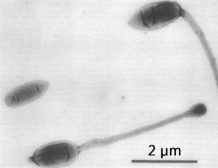
What happens during budding
Budding is different from another prokaryotic asexual reproduction, the binary fission. In binary fission, the cell divides to give rise to two daughter cells of equal unilateral growth. The parent basically splits into two cells with the same size. In budding, a new cell grows from an old cell. The new cell tends to be smaller than the old one. The same principle applies to single-celled eukaryotes. In fungi, such as the yeast, Saccharomyces cerevisiae, a smaller daughter cell grows on the larger mother cell. The bud forms and stays for a while, and then detaches to grow fully as a new individual.

More budding examples

Budding also occurs in certain invertebrates, e.g. Hydra (sponge), corals, echinoderm larvae, and some acoel flatworms. Budding in hydra occurs initially as a bud growing at the side of the “mother”. The bud breaks off to become a new individual Hydra.
Budding in plants is a form of vegetative reproduction. It occurs naturally. However, it can also be induced artificially, by horticulture. In this regard, the propagative technique is referred to as grafting wherein the bud of one plant is inserted onto another plant so as both plants can continue growing together. In most cases, a bud of a plant is inserted at the bark of the stem of another plant. Roses are an example of a plant that is commonly bud grafted.
Related terms
- Bud
- Shield budding
See also
- Grafting
- Asexual reproduction
References
- Its Citizens. Governments. (2020) Budding bacterium | biology | Britannica. https://www.britannica.com/science/budding-bacterium
© Biology Online. Content provided and moderated by Biology Online Editors.
